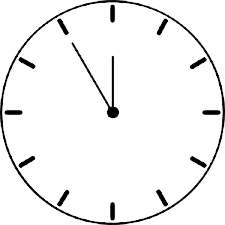In the realm of gaming, every millisecond counts. From lightning-fast reflexes to seamless gameplay experiences, performance optimization is crucial. One often overlooked factor that significantly influences gaming performance is timer resolution.
In this article, we delve into the intricacies of timer resolution and its profound effects on gaming performance. Understanding this aspect can empower gamers to fine-tune their systems for optimal results.
Table of Contents
What is Timer Resolution?
Timer resolution refers to the precision with which a system measures time intervals. In simpler terms, it determines how often the system updates its internal clock. This concept is particularly relevant in gaming, where timing precision directly impacts various game mechanics, such as animation smoothness, input responsiveness, and overall gameplay fluidity.
Impact on Gaming Performance:
Frame Rate Stability: Timer resolution plays a crucial role in maintaining consistent frame rates during gameplay. A higher timer resolution allows for more frequent updates, resulting in smoother frame transitions and reduced stuttering. This stability is paramount, especially in fast-paced competitive gaming scenarios where split-second decisions can make all the difference.
Input Lag Reduction: Lower timer resolutions can introduce noticeable input lag, causing delays between player actions and on-screen responses. By increasing timer resolution, gamers can minimize input lag, ensuring that their commands are executed promptly. This responsiveness is vital for competitive gaming, where swift reactions can determine victory or defeat.
Animation Smoothness: In many games, particularly those with intricate animations and visual effects, timer resolution influences the smoothness of movement. Higher resolutions facilitate more frequent updates, resulting in smoother animations devoid of jitter or choppiness. This enhances the overall immersive experience and allows players to fully appreciate the game’s visual intricacies.
Physics Simulation: Games often rely on physics engines to simulate realistic interactions between objects within the virtual environment. Timer resolution directly affects the accuracy of these simulations, with higher resolutions enabling more precise calculations. As a result, interactions such as collisions, gravity effects, and object trajectories appear more lifelike and immersive.
Optimizing Timer Resolution for Gaming:
Now that we understand the significance of timer resolution in gaming performance, let’s explore how gamers can optimize it for their systems:
Balancing Act: Adjusting timer resolution involves finding the right balance between precision and system resource utilization. While higher resolutions offer enhanced performance, they may also impose greater CPU overhead. Gamers should experiment with different resolutions to determine the optimal setting for their specific hardware configuration.
Third-Party Tools: Several third-party tools allow users to modify timer resolution settings with ease. These tools provide intuitive interfaces for adjusting resolution levels and monitoring their impact on gaming performance. However, users should exercise caution and ensure compatibility with their operating system to avoid potential conflicts or stability issues.
Driver Updates: Keeping system drivers up-to-date is essential for maximizing gaming performance, including timer resolution optimization. Graphics card drivers, in particular, often include optimizations and enhancements that can improve overall system responsiveness and stability.
Hardware Considerations: In addition to software tweaks, gamers should also consider hardware upgrades to complement timer resolution optimization efforts. Upgrading to a faster CPU or investing in high-performance memory modules can further enhance gaming performance, especially in CPU-bound scenarios.
Conclusion:
Timer resolution may seem like a technical minutia, but its impact on gaming performance is undeniable. By understanding how timer resolution influences frame rates, input responsiveness, animation smoothness, and physics simulation, gamers can fine-tune their systems for an optimal gaming experience.
Whether competing in esports tournaments or immersing oneself in a captivating single-player adventure, mastering timer resolution optimization is key to unlocking the full potential of gaming hardware and achieving peak performance.
